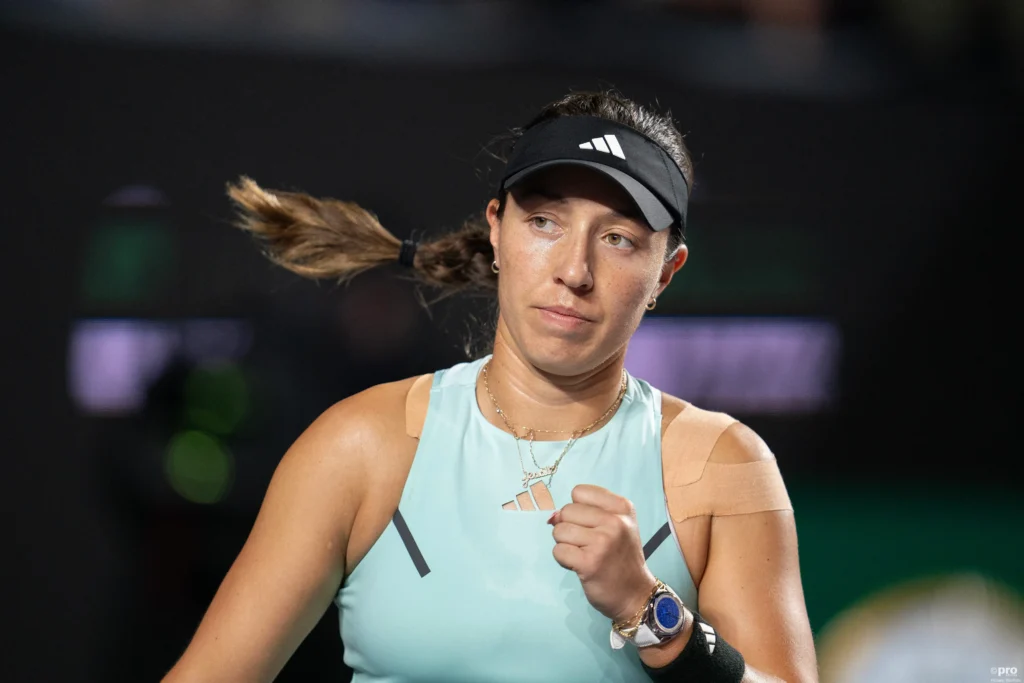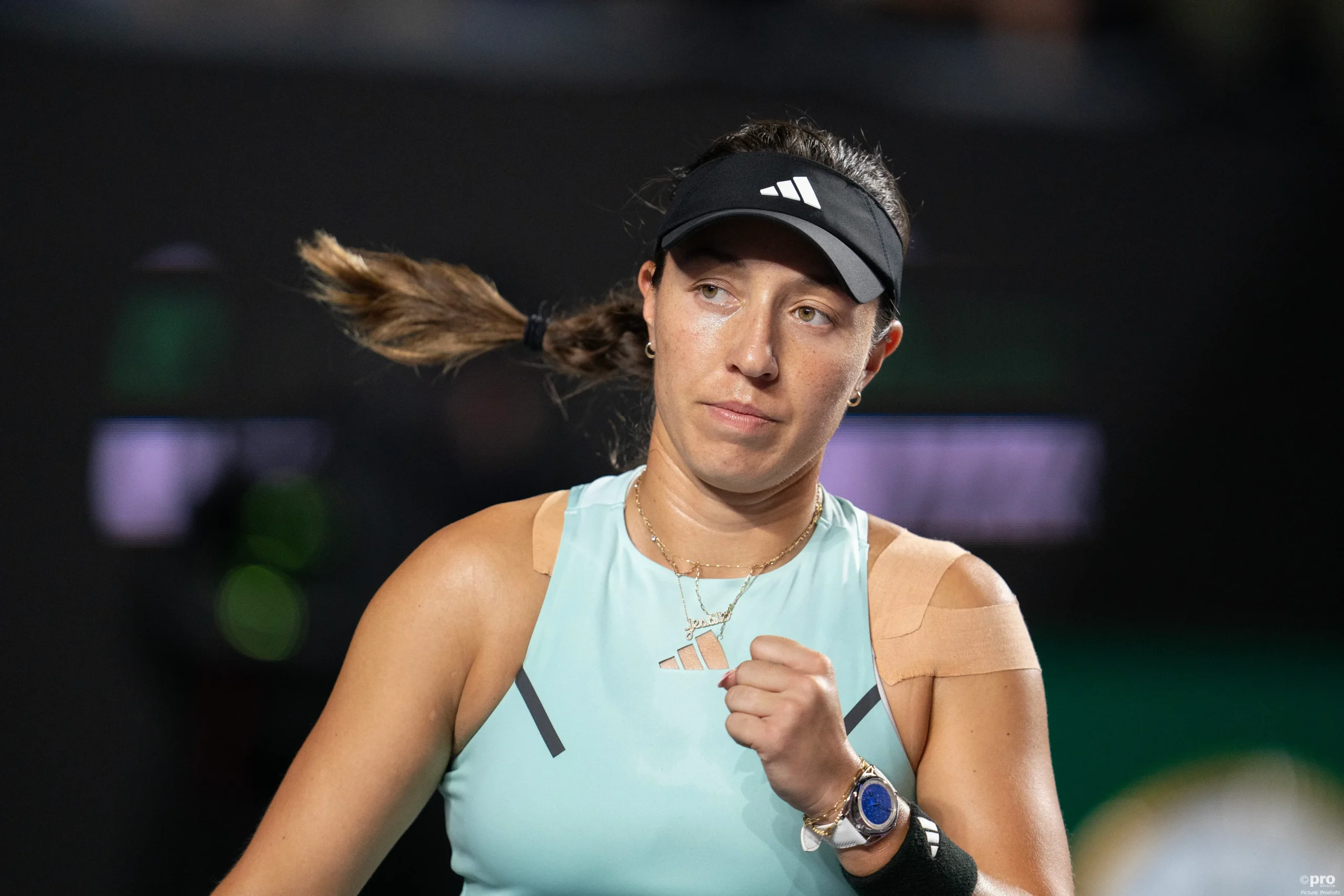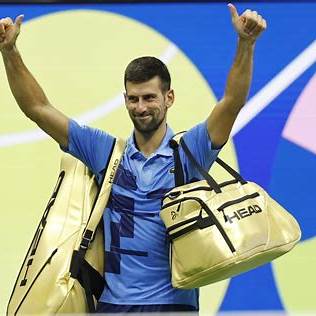Introduction
Jessica Pegula has firmly established herself as one of the most consistent players on the WTA Tour. A hardcourt specialist with a rock-solid baseline game, she has found her greatest successes on faster surfaces. However, as the clay season approaches, one question lingers: Can Jessica Pegula step out of her comfort zone on clay?
While Pegula has proven herself on the big stages—reaching deep into Grand Slams and securing key WTA titles—her results on clay have been more modest. With Roland Garros looming, this season could be a turning point in her career. Let’s dive into her challenges, potential improvements, and what it will take for her to make a deep run on the surface that has historically been her weakest.
Jessica Pegula’s Strengths: A Baseline Powerhouse
Pegula’s game is built on precision, consistency, and a high tennis IQ. She thrives on hard courts, where her clean ball-striking, flat groundstrokes, and excellent court positioning allow her to dictate play. Her strengths include:
- Reliable two-handed backhand: One of the most consistent in the game, helping her control rallies.
- Strong return game: Pegula has one of the best return stats on tour, putting immediate pressure on opponents.
- Smart shot selection: She doesn’t just rely on power but constructs points methodically.
- Mental toughness: She is known for staying composed in high-pressure situations.
These attributes have helped her break into the WTA Top 10, but clay introduces an entirely different challenge.
Why Clay Has Been a Struggle for Pegula
Despite her success on faster surfaces, Pegula has yet to make a real breakthrough on clay. She has had solid but unspectacular results at Roland Garros, with a few quarterfinal appearances but no deep runs. Why is this the case?
1. A Game Suited for Speed, Not Bounce
Pegula’s flat, powerful shots are lethal on hardcourts but don’t generate the same effect on clay. The slower surface neutralizes her pace, allowing opponents more time to react. Additionally, her shots don’t bounce as high as players who naturally produce heavy topspin, making it easier for clay-court specialists to handle her pace.
2. Movement and Slide Adaptation
Clay demands fluid movement, quick recovery steps, and effective sliding, areas where Pegula is still improving. Unlike natural clay-courters who glide effortlessly, Pegula often looks more rigid when forced to cover the court in extreme positions.
3. Lack of Heavy Topspin
One of the key weapons for clay-court success is topspin, which pushes opponents behind the baseline and creates higher bounce. Players like Iga Świątek and Rafael Nadal thrive on this, but Pegula’s flatter strokes don’t benefit from the clay as much.
4. Endurance Factor
Clay matches tend to be longer, more physical battles, requiring extended rallies and high levels of stamina. Pegula’s efficiency on hard courts means she often wins points quickly, but on clay, she is forced to construct points with more patience—something that can take her out of her comfort zone.

Signs of Progress: Is Pegula Turning a Corner?
While clay hasn’t historically been her stronghold, Pegula has been making adjustments to her game that could change the narrative.
1. Improved Defensive Play
One of Pegula’s biggest improvements in recent seasons has been her defensive capabilities. She has started absorbing pace better and extending rallies—a crucial trait on clay. This could serve her well in grinding matches against clay specialists.
2. Tactical Variety
Pegula has also worked on incorporating more variety into her game, including:
- Drop shots to exploit opponents standing far behind the baseline.
- More angle-heavy groundstrokes to open up the court.
- Improved net play, allowing her to finish points at the net rather than relying on outright winners from the baseline.
3. Confidence from Big Wins
Winning breeds confidence, and Pegula’s recent strong performances on all surfaces indicate she is ready to embrace new challenges. If she can carry that mindset into the clay season, she could start surprising some of the top players.
The Road Ahead: How Can Pegula Excel on Clay?
For Pegula to truly step out of her comfort zone on clay, she will need to make key adjustments.
1. Develop a Heavier Topspin Forehand
A more spin-heavy forehand would allow her to dictate play more effectively on clay, pushing opponents deeper and setting up easier finishing shots.
2. Improve Her Sliding and Movement
The best clay-court players use sliding to maintain balance and recover quickly. Pegula must continue refining this skill, ensuring she isn’t caught off-balance when defending deep shots.
3. Be More Aggressive with Point Construction
Clay demands a strategic approach rather than relying on outright power. Pegula must become more patient in rallies, using angles and well-timed aggression rather than looking for quick winners.
4. Strengthen Physical Endurance
Longer rallies and extended matches on clay require a different level of stamina. Increased focus on physical conditioning could help her handle grueling three-set battles against the best.
5. Gain More Experience on Clay
While Pegula has played on clay, she has yet to spend enough time developing a true comfort level. Playing more WTA 1000 events leading into Roland Garros and taking part in clay-specific training blocks could speed up her adaptation.
Can Pegula Become a True Clay Threat?
The simple answer is yes, but it won’t be easy. Pegula has all the tools to become a more effective clay-court player, but it will require:
✔ Tactical Adaptation
✔ Physical and Mental Endurance
✔ More Experience on the Surface
She has already proven she can hang with the best on other surfaces. Now, the challenge is whether she can translate her elite consistency onto clay and make a deep run at Roland Garros.
This season presents a golden opportunity for Pegula to break through the clay-court barrier and change the narrative surrounding her game. If she can refine her tactics, embrace the grind, and trust her evolving skill set, there’s no reason why she can’t become a legitimate Roland Garros contender.

Final Thoughts: Will 2024 Be the Year of Pegula on Clay?
The road to success on clay won’t be easy for Pegula, but every champion has had to overcome obstacles to achieve greatness. If she can rise to the challenge, step out of her comfort zone, and embrace the demands of the clay-court season, we might just witness one of the most exciting transformations in women’s tennis.
The tennis world is watching. Can Jessica Pegula turn her clay-court doubts into dominance? Only time will tell—but one thing is for sure: she has the game, the mindset, and the talent to do it.
Engage With Us!
What do you think? Can Jessica Pegula step out of her comfort zone and make a serious impact on clay this season? Share your thoughts in the comments below and let’s keep the conversation going!


